NASA rover streaks toward a landing on Mars
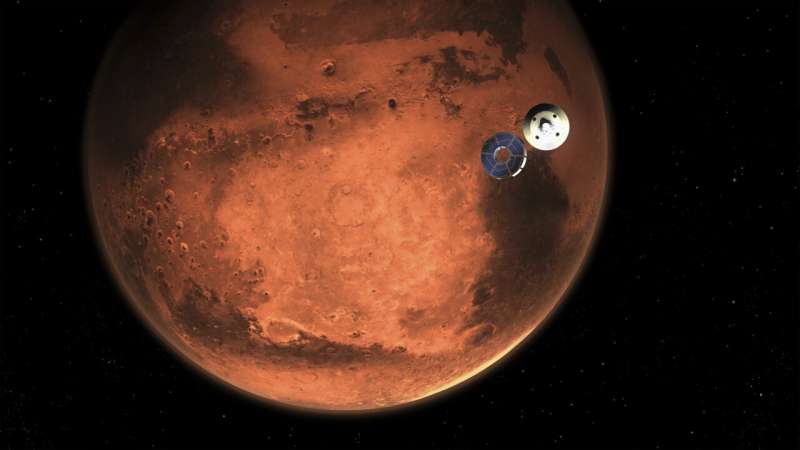
A NASA rover streaked toward a landing on Mars on Thursday in the riskiest step yet in an epic quest to bring back rocks that could answer whether life ever existed on the red planet.
Ground controllers at the space agency's Jet Propulsion Laboratory in Pasadena, California, settled in nervously for the descent of Perseverance to the surface of Mars, long a deathtrap for incoming spacecraft. It takes a nail-biting 11 1/2 minutes for a signal that would confirm success to reach Earth.
The landing of the six-wheeled vehicle would mark the third visit to Mars in just over a week. Two spacecraft from the United Arab Emirates and China swung into orbit around the planet on successive days last week.
All three missions lifted off in July to take advantage of the close alignment of Earth and Mars, traveling some 300 million miles in nearly seven months.
Perseverance, the biggest, most advanced rover ever sent by NASA, stood to become the ninth spacecraft to successfully land on Mars, every one of them from the U.S., beginning in the 1970s.
The car-size, plutonium-powered rover was aiming for NASA's smallest and trickiest target yet: a 5—by-4-mile strip on an ancient river delta full of pits, cliffs and fields of rock. Scientists believe that if life ever flourished on Mars, it would have happened 3 billion to 4 billion years ago, when water still flowed on the planet.
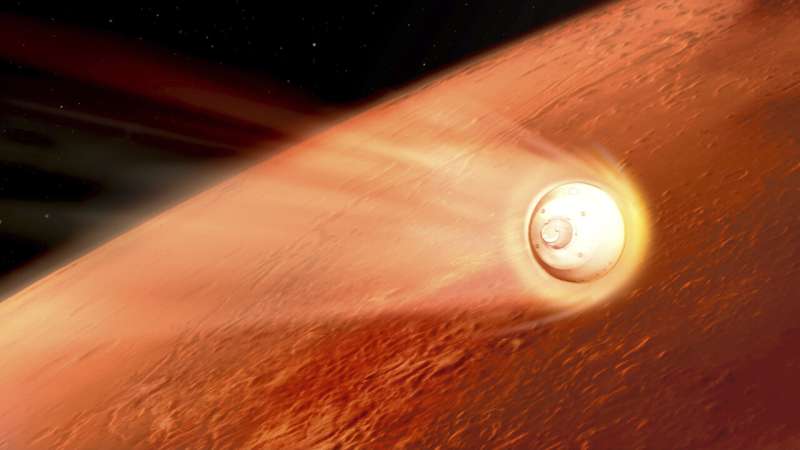
Percy, as it is nicknamed, was designed to drill down with its 7-foot (2-meter) arm and collect rock samples that might hold signs of bygone microscopic life. The plan called for three to four dozen chalk-size samples to be sealed in tubes and set aside on Mars to be retrieved by a fetch rover and brought homeward by another rocket ship, with the goal of getting them back to Earth as early as 2031.
Scientists hope to answer one of the central questions of theology, philosophy and space exploration.
"Are we alone in this sort of vast cosmic desert, just flying through space, or is life much more common? Does it just emerge whenever and wherever the conditions are ripe?" said deputy project scientist Ken Williford. "Big, basic questions, and we don't know the answers yet. So we're really on the verge of being able to potentially answer these enormous questions."
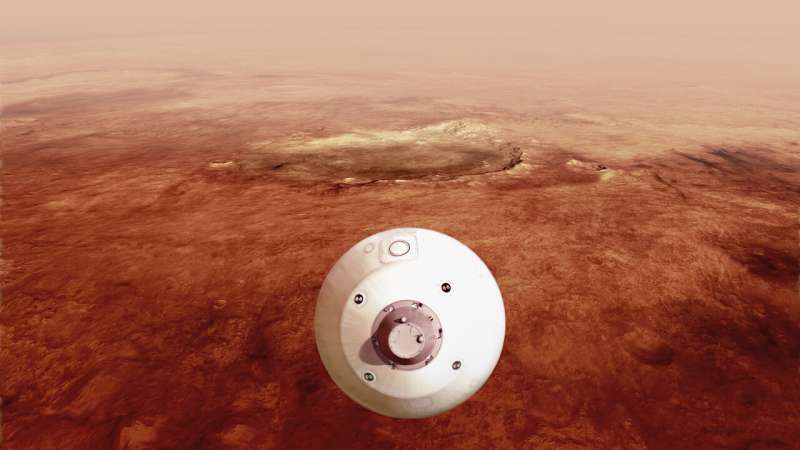
China's spacecraft includes a smaller rover that also will be seeking evidence of life—if it makes it safely down from orbit in May or June.
Perseverance's descent has been described by NASA as "seven minutes of terror," in which flight controllers can only watch helplessly. The preprogrammed spacecraft was designed to hit the thin Martian atmosphere at 12,100 mph (19,500 kph), then use a parachute to slow it down and a rocket-steered platform known as a sky crane to lower the rover the rest of the way to the surface.
Mars has proved a treacherous place: In the span of less than three months in 1999, a U.S. spacecraft was destroyed upon entering orbit because engineers had mixed up metric and English units, and an American lander crashed on Mars after its engines cut out prematurely.
NASA is teaming up with the European Space Agency to bring the rocks home. Perseverance's mission alone costs nearly $3 billion.
-
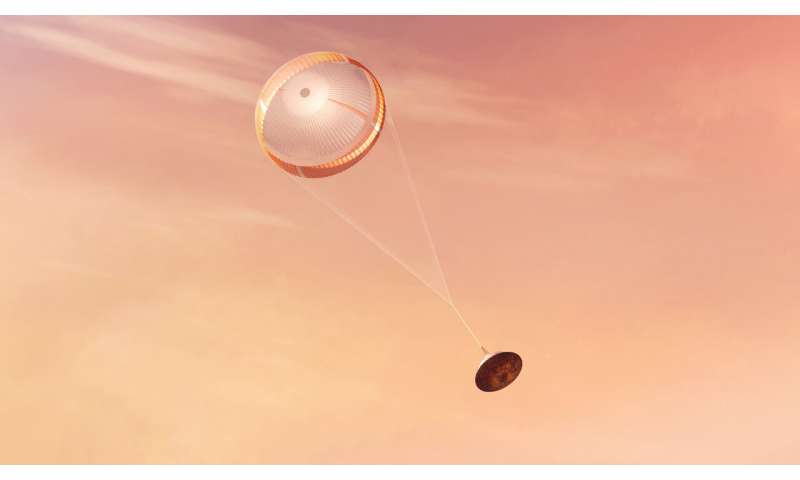
In this illustration made available by NASA, the Perseverance rover deploys a supersonic parachute from its aeroshell as it slows down before landing on the surface of Mars. (NASA/JPL-Caltech via AP) -
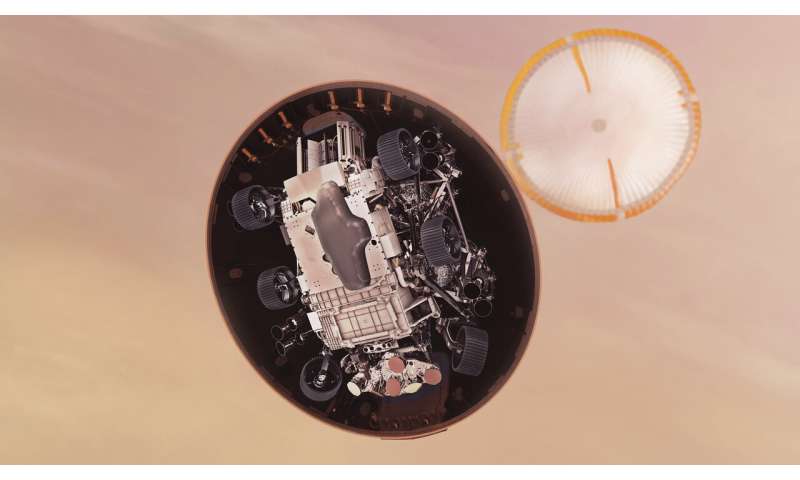
In this illustration made available by NASA, the Perseverance rover gets its first look at the Martian surface below, after ejecting its heat shield just under six minutes after entry into the Mars atmosphere. (NASA/JPL-Caltech via AP) -
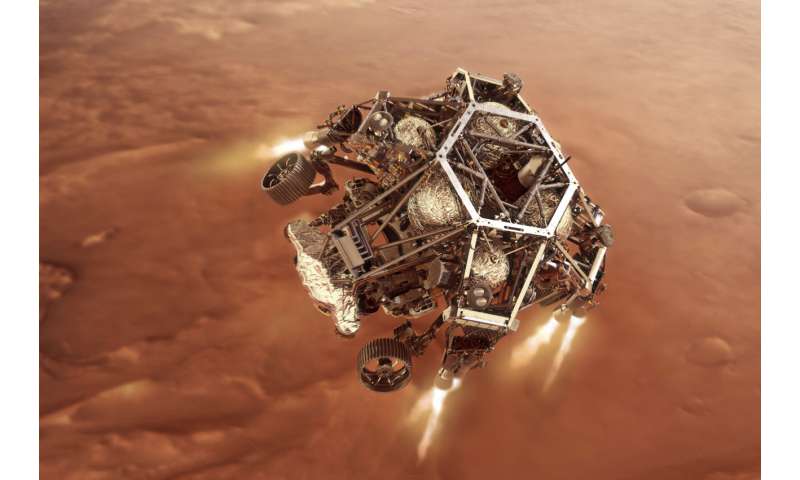
In this illustration provided by NASA, the Perseverance rover fires up its descent stage engines as it nears the Martian surface.. This phase of its entry, descent and landing sequence, or EDL, is known as "powered descent." (NASA/JPL-Caltech via AP) -

This image made available by NASA depicts a possible area through which the Mars 2020 Perseverance rover could traverse across Jezero Crater. This mosaic is composed of aligned images from the Context Camera on the Mars Reconnaissance Orbiter. (NASA/JPL-Caltech/USGS via AP) -
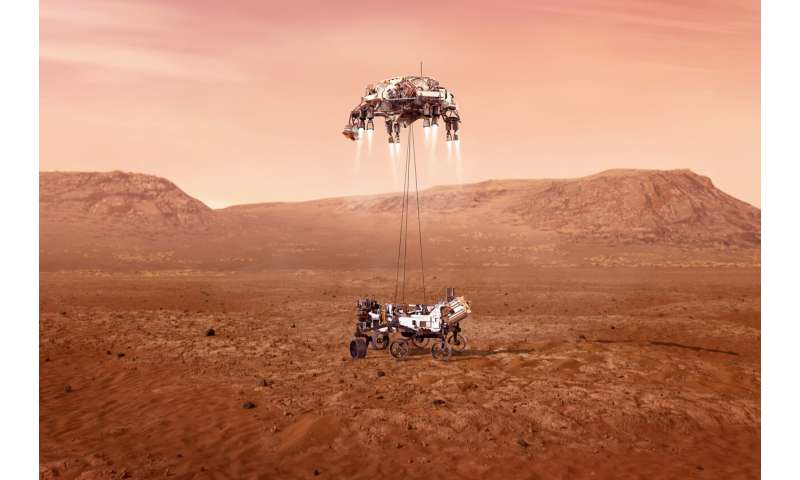
This illustration provided by NASA shows the Perseverance rover, bottom, landing on Mars. Hundreds of critical events must execute perfectly and exactly on time for the rover to land safely on Feb. 18, 2021. Entry, Descent, and Landing, or "EDL," begins when the spacecraft reaches the top of the Martian atmosphere, traveling nearly 12,500 mph (20,000 kph). EDL ends about seven minutes after atmospheric entry, with Perseverance stationary on the Martian surface. (NASA/JPL-Caltech via AP) -
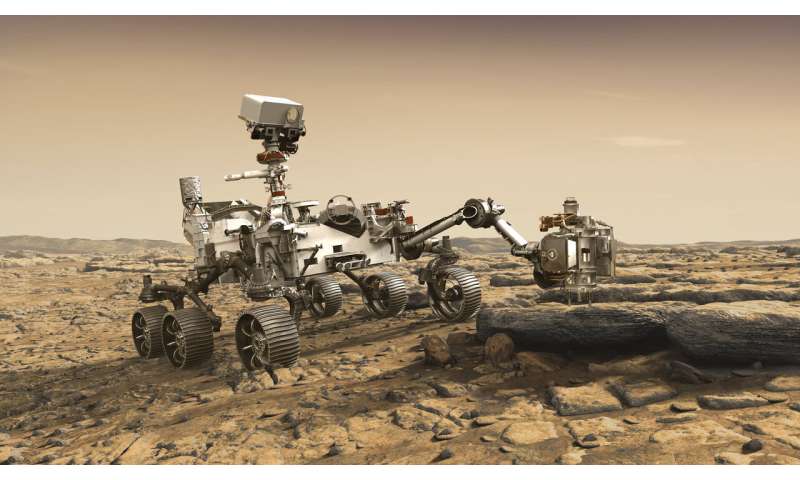
In this illustration made available by NASA, the Mars 2020 Perseverance rover studies a Mars rock outrcrop. (NASA/JPL-Caltech via AP) -
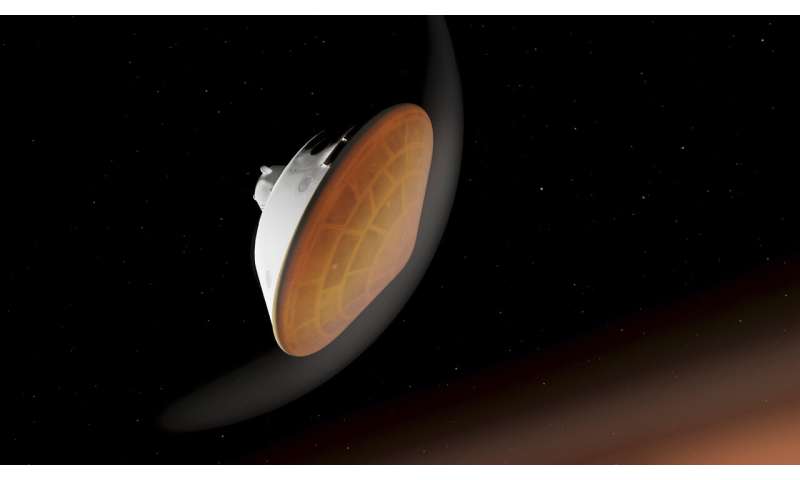
In this illustration made available by NASA, the Perseverance rover, with its heat shield facing the planet, begins its descent through the Martian atmosphere. (NASA/JPL-Caltech via AP)
The only way to confirm—or rule out—signs of past life is to analyze the samples in the world's best labs. Instruments small enough to be sent to Mars wouldn't have the necessary precision.
"The Mars sample return project is probably the most challenging thing we've ever attempted within NASA," said planetary science director Lori Glaze, "and we don't do any of these things alone."
© 2021 The Associated Press. All rights reserved. This material may not be published, broadcast, rewritten or redistributed without permission.





















